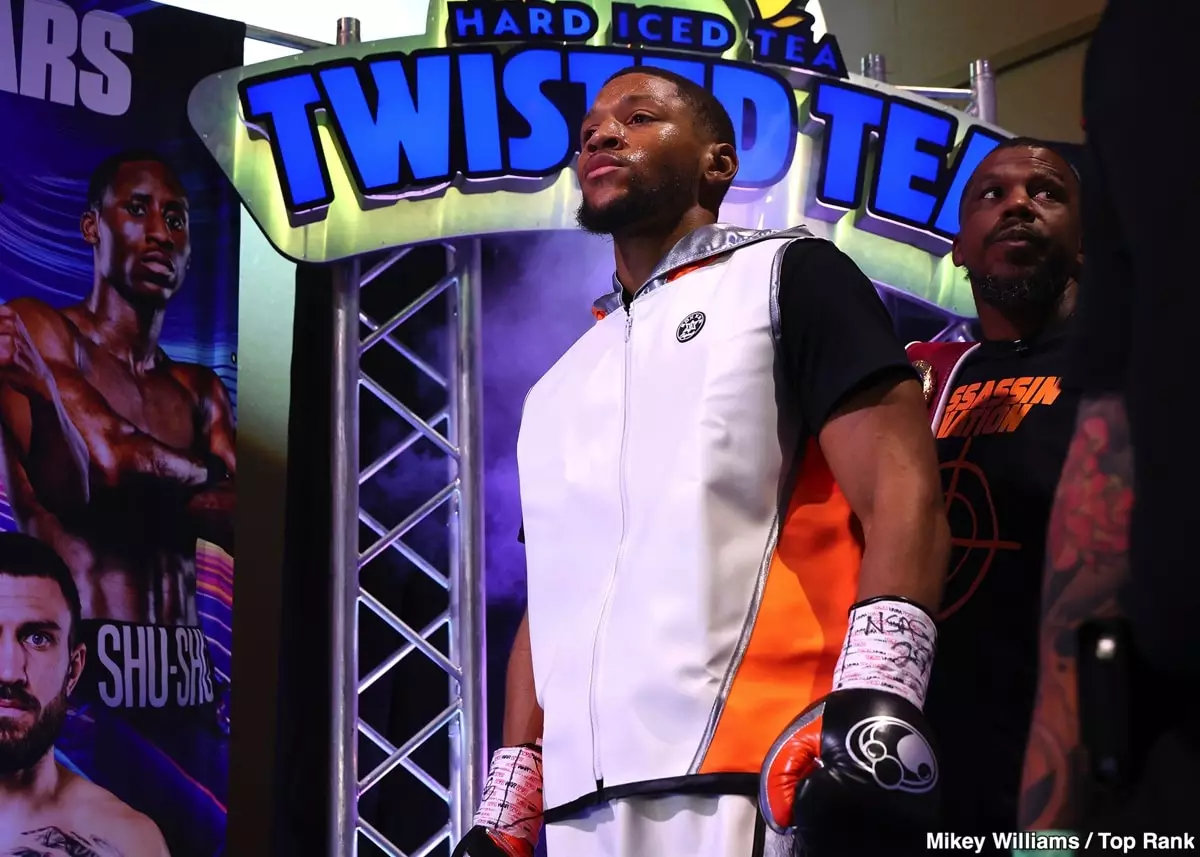The world of boxing thrives on high-stakes matchups that captivate audiences and elevate careers. Recently, the anticipated unification bout between IBF welterweight champion Jaron “Boots” Ennis and WBO champion Brian Norman Jr. was derailed, drawing attention from fans and analysts alike. Trainer Derek “Bozy” Ennis has put the blame squarely on Norman Jr., insisting that financial disagreements were at the heart of the issue. Norman Jr. reportedly sought an increase from a $1.7 million offer to $2.2 million, a sum he argued was necessary to cover promotional expenses and fighter obligations. The rationale behind such a request is not merely a personal negotiation tactic—it’s indicative of the larger economic stakes that fighters must navigate in this combative sport.
Understanding Norman Jr.’s Perspective
For anyone embedded in the boxing ecosystem, Norman Jr.’s position becomes clearer when viewed through the lens of risk versus reward. Accepting a fight that offers substantially less than what he believes is justified, especially against a formidable opponent like Ennis, could lead to disadvantageous financial and career outcomes. When top-tier boxers are pitted against each other, the stakes are not only physical but pecuniary. Norman Jr.’s willingness to step into the ring on neutral grounds in Las Vegas reflects an openness to compromise—not a rejection of the bout itself. By seeking a higher purse, he positions himself not just as a challenger, but as a co-equal partner worth a significant investment.
The Ennis Camp’s Reluctance
On the other hand, the Ennis camp’s reticence to up the offer by $500,000 is equally telling. There lies an underlying fear of placing Boots Ennis in a situation that could either jeopardize his record or expose him to a very tough opponent capable of altering his trajectory. It’s also noteworthy that the Ennis team could have had Norman Jr. fight in a neutral site, yet they were insistent on Philadelphia—Ennis’s hometown—implying an assumption of an inherent advantage. This highlights a strategic miscalculation that could prove detrimental in the long run. The insistence on keeping the bout local indicates a lack of foresight and an inability to negotiate effectively under pressure.
Fan Reactions and Perceptions
The fans have also contributed to the narrative surrounding the negotiation fallout. Many perceive the conflict as a sign of cowardice on the part of Team Ennis—an echo of their past encounters where fighters viewed through the lens of risk might have been marching under an undeserved banner of invincibility. It is essential for fans to reassess these internal dynamics instead of simply labeling Norman Jr. as “greedy” or unwilling. Realistically, elite fighters uphold their reputations and career trajectories, making it justifiable for them to seek lucrative agreements when they are about to step into the squared circle with a dangerous opponent.
Considerations from Both Camps
Bozy Ennis’s criticism does, in some regard, overlook the financial realities many fighters face. Mentioning Norman Jr.’s earlier bout purse of $100,000 as a comparative leverage in negotiations is a misstep. The past purse has no bearing on the current scenario—each fighter operates within the framework of their ongoing career realities and potential earnings. Thus, the Ennis camp’s arguments regarding Norman Jr.’s financial history seem misplaced. They cannot simply disregard a fighter’s growing credentials as a valid bargaining tool in negotiations. Instead of simply attaching their pride to the fight’s location or initial offer, both sides could benefit from exploring the broader implications of negotiation flexibility.
Rethinking the Future of Negotiations in Boxing
As the dust settles, it becomes crucial for the world of boxing to rethink how such negotiations unfold. Compromise often lies at the heart of great matchups. Instead of fixed positions, negotiations should evolve in line with both fighters’ career trajectories. An increased sensitivity to financial aspects, grounded in an understanding of each fighter’s unique circumstances and aspirations, can foster an environment where both contenders can emerge victorious—both from the standpoint of skill and finances. Adjusting parameters beyond the initial offers gives room for creativity, enabling fighters to face off and elevate their brand without compromising their value.
This controversial negotiation breakdown offers an opportunity for reflection among promoters, trainers, and fighters alike. If something can be learned from this, it’s that boxing thrives on the promise of thrilling contests, requiring a collective commitment to making those clashes happen—no matter the dollar signs involved.

